Valves are electro-mechanical components that regulate or direct a system’s flow and pressure of liquids, gases, and slurries by opening, closing, or partially obstructing fluid flow. In simple terms, it manages the flow and pressure. They are also referred to as regulators and are used in a wide range of applications. Valves come in a wide range of sizes, designs, functions, and operations.
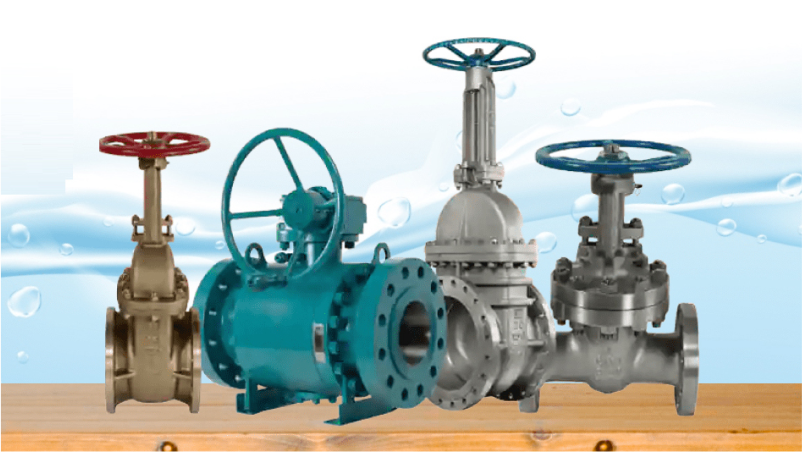
Industrial valves are designed to withstand high pressure, whether from fluid or gas. Most utilities like water, oil, gas, etc would be unable to function without heavy-duty, industrial-strength valves.
This guide introduces the industrial valve sector and provides basic information on fundamental topics like valve types, designs, and applications.
Types of Industrial Valves
Valves have a variety of traits, benchmarks, and classifications that help you understand their intended uses and anticipated performance. One of the simplest ways to sort the vast selection of valves available and find a good fit for a project or process is through valve designs.
The valve types listed below are the most common types of valves used in industries.
1. Gate Valves
Gate valves are attached to the pipelines to start or stop the flow of a fluid. An industrial gate valve is made up of a channel that can be opened or closed by raising and lowering a metal gate.
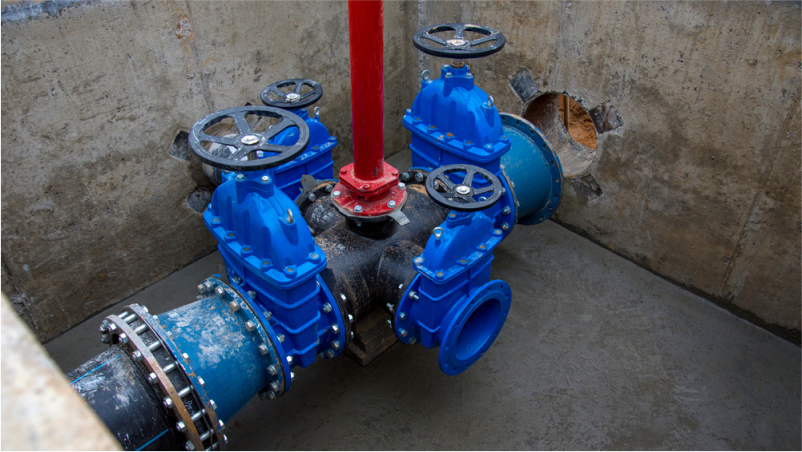
The gate opens and enables passage when lifted; when lowered, it closes the channel. Gate Valves are also known as isolation valves or on/off valves which support the regulation of liquid flow through the pipes.
Gate valves can be manufactured more economically and with fewer gate valve parts than other types of valves in plumbing thanks to their flexibility. However, due to their architecture, they are challenging to accurately regulate. The water industry uses gate valves the most regularly. Water flow can be started or stopped using gate valves.
Gate valves are used in a wide range of industries, including the textile, electricity, petrochemicals plant, shipbuilding, food processing, chemical industry, and paper mills. These valves are created from a variety of materials, including stainless steel, cast iron, alloy steel, forged steel, etc.
What’s more, gate valve types can be divided into two main categories: Parallel and wedge-shaped.
Advantages
- No resistance to flow when open
- Simple design
- Suitable for pipes with large diameters
- Little pressure drop
Disadvantages
- Flow changes nonlinearly with stem travel
- Vibration
- Repair work is difficult
Application
- Suitable for high temperature and pressure conditions
- Wastewater applications and neutral liquids
- on-off applications
2. Globe Valve
Globe Valves are one of the most popular ones of valves used in several applications. These valves, similar to gate valves, are linear motion and are frequently used in on-off and throttling applications. A globe valve has an S-shaped channel with a valve member that raises and lowers to regulate the flow of fluid or gas.

Globe valve types are designed for control applications and have a higher degree of flow modulation. In addition to facilitating control, globe valve designs frequently feature removable inner components in the body of the valve, allowing the user to alter the size of the orifice in the middle to suit their needs. You may find the best industrial valve online to buy globe valve.
Advantages
- Excellent shutting mechanism
- No wear & tear issue
- Easy to repair
Disadvantages
- Obstacles in the media flow path could result in high-pressure loss
- Ineffective for high-pressure application
Application
Globe valves are mostly employed for throttling operations. They could be viewed as all-purpose flow control valves that are employed in high-temperature situations.
3. Butterfly Valve
A butterfly valve is a quarter-turn rotational motion valve that is used to stop, control, and initiate flow. Butterfly valve isolates or regulates the flow of a fluid, but with limited control capabilities.
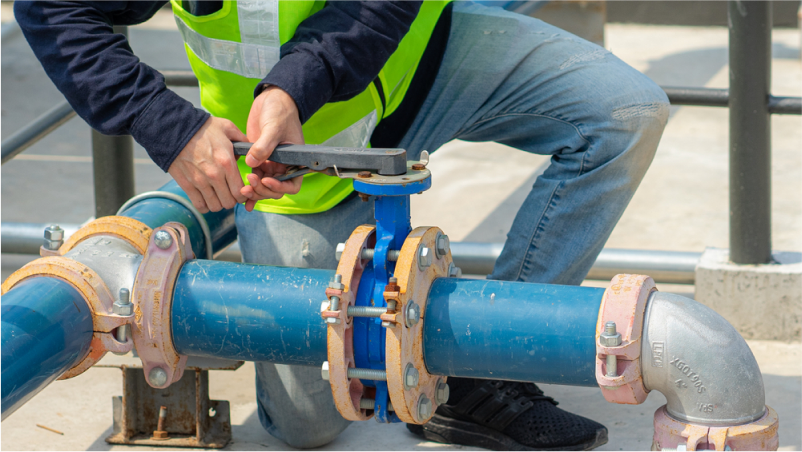
Butterfly valves are easily handled by rotating a handle 90 degrees. Large Butterfly valves are equipped with a gearbox that connects the handwheel butterfly valves to the stem through gears. This reduces speed while simplifying the valve’s operation.
It comprises a metal disc in the valve’s body that, when closed, is positioned perpendicular to the flow. The control of liquid flow is possible with intermediate rotations. Butterfly valves can be set up to function pneumatically, manually, or electrically.
There are 3 main butterfly valve types :
- Zero-offset/Concentric/Rubber seated Butterfly Valve
- High-Performance Double Offset Butterfly Valve
- Triple Offset Butterfly Valve
Advantages
- Compact design
- Lightweight
- Cost-efficient
- Minimal pressure drop
- Easy installation
Disadvantages
- Limited throttling capabilities
- Strong pressure may affect disc movement
Application
- Butterfly valves are used to shut off the regulating and isolating service in wastewater treatment facilities, power plants, gas supply applications, and pharmaceutical, chemical, and food process plants.
- They are employed for corrosive liquids under low pressure and temperature.
4. Non-return Valve
Non Return Valves (NRV) are also known as Check Valves. They allow a medium to flow in just one direction and prevent the backflow of media in the reverse direction. Non-return valves are used to stop process flow from switching directions within a system, which could harm machinery or disrupt the process.
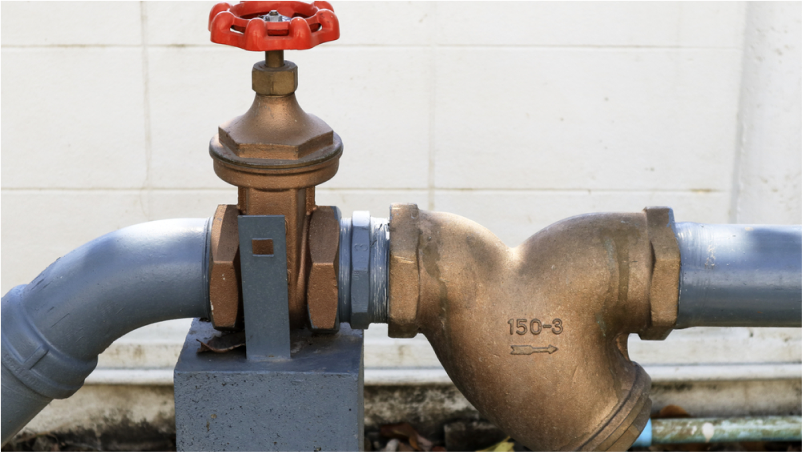
NRVs are widely used to protect pumps in liquid applications and compressors in gas systems from backflow, which could cause the water pump non-return valve or compressor to shut down.
Advantages
- Simple design
- No need for human intervention
- Effectively prevent backflow
- Can be used as a backup system
Disadvantages
- Not great for throttling
- The disc may potentially get stuck in the open position.
Application
- NRV valves are widely used in steam boilers’ feed pumps.
- Chemical and power facility process.
- When there are multiple gases in one pipeline, check valves are also utilised.
5. Ball Valve
A ball valve is a quarter-turn valve. Ball valves utilise a ball to manage the flow of liquid/fluid between two openings. These valves control the flow of gas or liquid by allowing the hole to be completely closed, partially opened, or open.
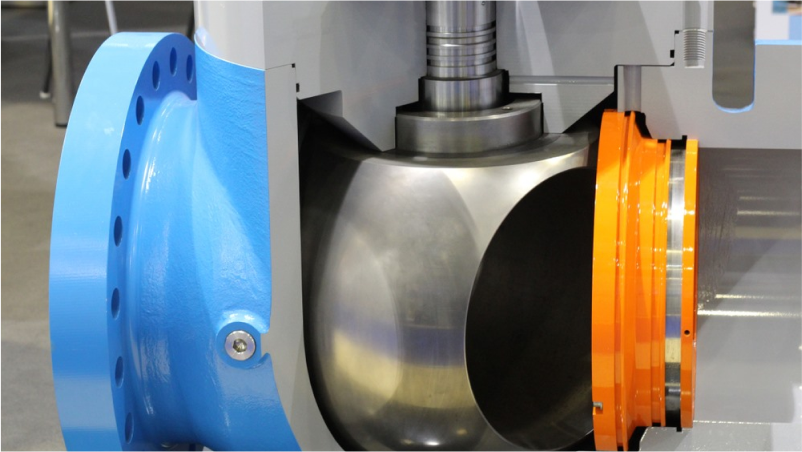
Ball valves are the best option for use with gases since they can provide greater sealing. They are extremely adaptable and can withstand pressures of up to 700 bars and temperatures of up to 200 °C. Their typical sizes range from 0.5 cm to 30 cm. Ball valves have a straightforward structure, making them simple to operate and maintain.
Ball valves come in five different body types: single, three-piece, split, top entry, and welded. The variation is dependent on how the valve’s parts—particularly the casing that houses the ball itself—are created and put together. In each instance, the ball float valve operates the same.
Advantages
- Compact design
- Low maintenance
- Time & Cost-effective
- Leak-proof service
- Multi-way design flexibility
- Excellent shut-on/off capability
- Minimal pressure drop
Disadvantages
- Not suitable for permanent throttling.
- Incompatible with thicker media due to the possibility of sedimentation, which could harm the valve disc and seat.
- Rapid shutting and opening could cause a pressure surge.
Application
- Ball valves are used to regulate flow and pressure and also to stop the flow of corrosive liquids, slurries, regular liquids, and gases.
- Ball valves are employed in the oil and natural gas sector, manufacturing industries, chemical storage, and residential applications.
6. Needle Valve
A needle valve is used for continuous flow throttling by means of regulating the flow.
Needle valves are just like globe valves. The major difference between them is the needle-like disk.
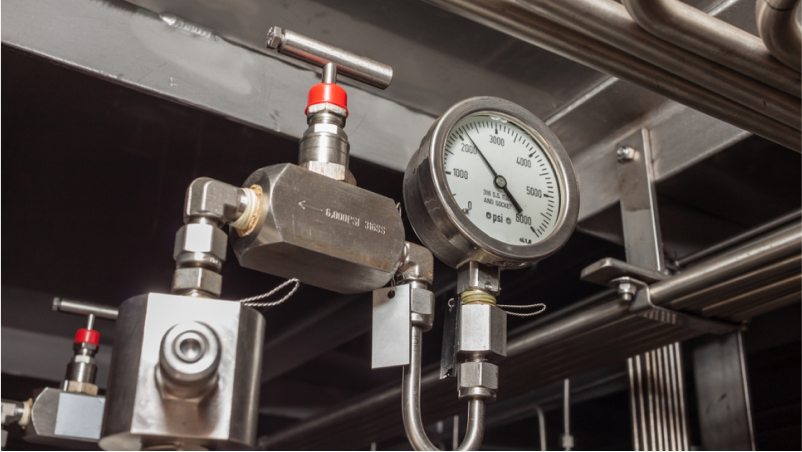
It is designed to provide accurate flow control in small-diameter piping/tubing systems. Needle valves got their name from their sharp pointed conical dish & matching seat.
Fluids flow at 90 degrees and pass through orifices. The body of the needle valve is machined and forged. Depending on the needs of the services, this body may be made of forged carbon steel or stainless steel needle valve.
Advantages
- It gives precise control over the flow
- Minimum mechanical force required to seal the valve
Disadvantages
- It can be only useful for small-diameter pipes only.
- Require more turns to completely shut or open the valve.
Application
- Needle valves are used at places where precise control of flow is required.
- It can be used on/off valves or throttle valves.
- Analog instruments are fitted with needle valves to control the flow.
Summary
We have looked into various types of valves utilised in industry and their application along with their advantages and disadvantages in a particular process. Buying industrial valves online will be a relief after going through the above information.
